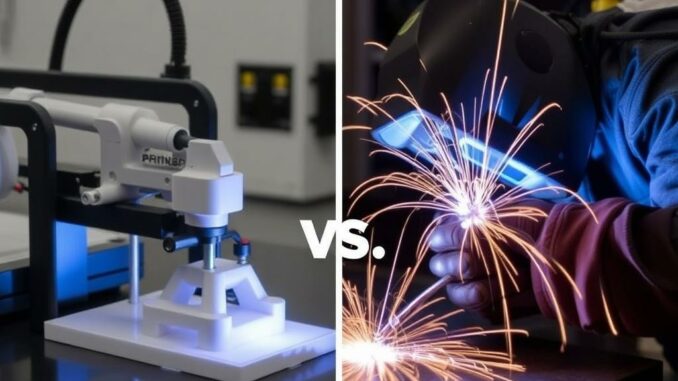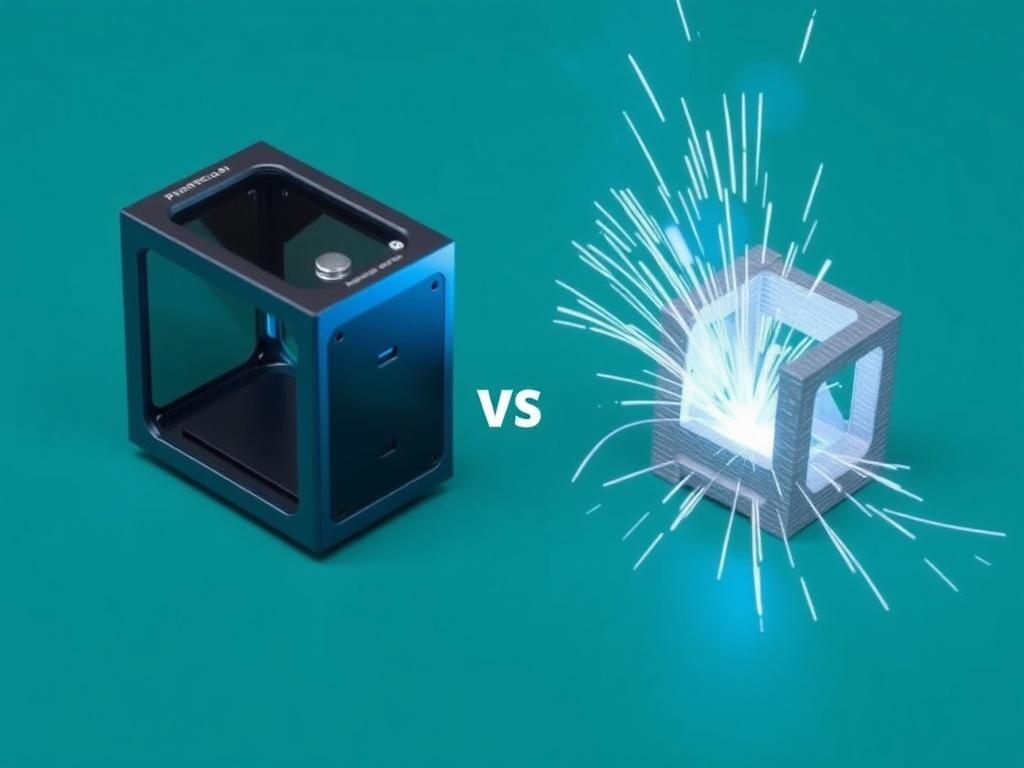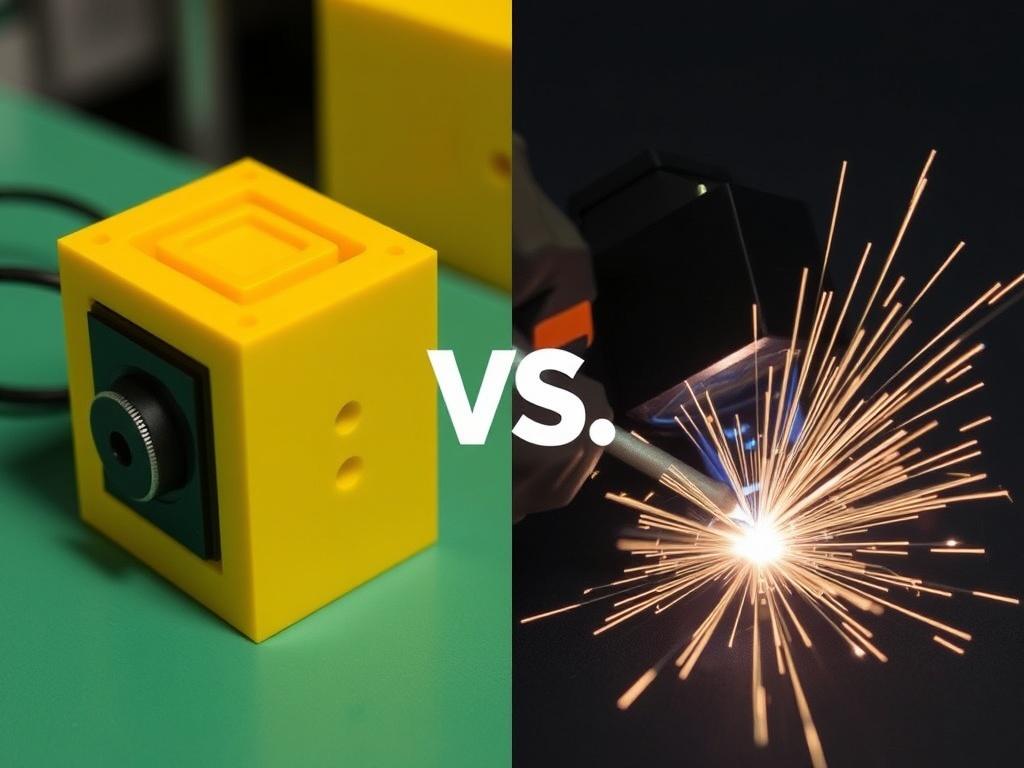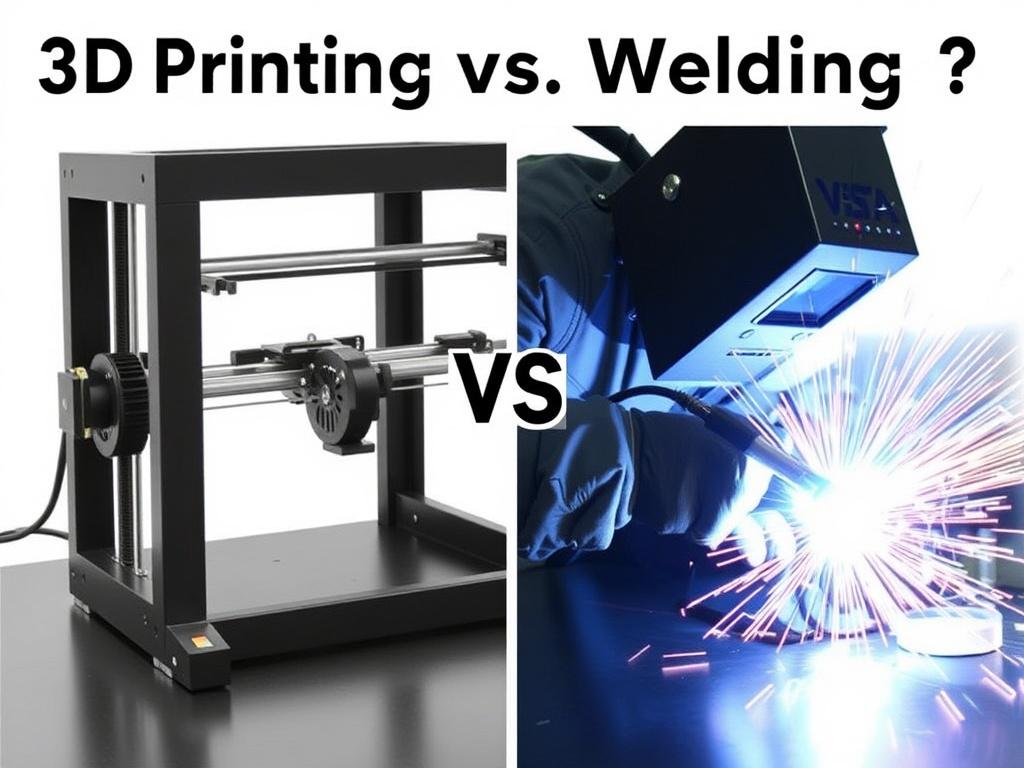
SQLITE NOT INSTALLED
In the modern world of manufacturing and fabrication, two techniques stand out as powerful contenders: 3D printing and welding. Both have revolutionized how we create, repair, and innovate across industries ranging from automotive to aerospace, construction to healthcare. But which technique truly holds the advantage for fabrication? Is 3D printing destined to take over, or does welding still have the upper hand for certain applications? In this in-depth article, we will explore and compare these two fabrication methods, breaking down their strengths, weaknesses, costs, and real-world uses. By the end, you’ll have a clear understanding of which is better for your specific needs — 3D printing or welding.
Understanding the Basics: What Is 3D Printing?
Before diving into comparisons, it’s crucial to understand what 3D printing entails. Also known as additive manufacturing, 3D printing is a process that builds objects layer by layer from digital models. Unlike traditional subtractive manufacturing methods that carve away material, 3D printing constructs an object by depositing precise materials, such as plastics, metals, or resins, in a specific pattern.
The technology has rapidly advanced over the past decade, with printers capable of producing everything from simple prototypes to complex functional parts. Various 3D printing methods exist, including fused deposition modeling (FDM), stereolithography (SLA), selective laser sintering (SLS), and direct metal laser sintering (DMLS), each with unique capabilities and ideal use cases.
How Does 3D Printing Work?
3D printing begins with a computer-aided design (CAD) file that serves as a digital blueprint. This file is sliced into thousands of horizontal layers by specialized software. The 3D printer then reads this information and deposits material layer by layer to build the object. Depending on the technology, the material may be melted, cured by UV light, or fused by a laser.
This layer-by-layer approach offers incredible control over the shape and internal structure of the fabricated part. It allows for design complexity that is difficult, sometimes impossible, with traditional manufacturing techniques.
Common Materials Used in 3D Printing
One of the reasons 3D printing is so versatile is the wide range of materials that can be used. These include:
- Thermoplastics: Such as PLA, ABS, and PETG, common in FDM printing.
- Resins: Photopolymer resins used in SLA for high-detail parts.
- Metal Powders: Used in metal 3D printing techniques like DMLS for aerospace and medical parts.
- Composites: Carbon fiber or glass fiber infused filaments for enhanced strength.
This variety enables 3D printing to serve multiple industries with applications ranging from rapid prototyping to manufacturing end-use components.
Understanding Welding: The Traditional Fabrication Method
Welding is one of the oldest and most widely used fabrication techniques, involving the fusion of two or more materials—most commonly metals—by applying heat, pressure, or both. When done correctly, welding forms a strong, permanent bond that can withstand extreme conditions, making it ideal for structural applications and heavy-duty manufacturing.
There are various welding methods, including arc welding, MIG (Metal Inert Gas) welding, TIG (Tungsten Inert Gas) welding, and spot welding. Each has specific benefits and is chosen based on material type, thickness, and intended use.
How Does Welding Work?
At its core, welding requires heating metal parts to a temperature where they melt and fuse together. This is often done using an electric arc or a flame. A filler material may be added to strengthen the joint, and shielding gas protects the molten metal from contaminants. The process requires skilled craftsmanship to ensure strong, clean welds, as poor technique can result in weak joints or defects.
Common Types of Welding
| Type | Method | Common Applications | Strengths |
|---|---|---|---|
| Arc Welding | Electric arc creates heat | Construction, heavy manufacturing | Strong bonds, versatile |
| MIG Welding | Wire electrode fed through gun | Automotive, manufacturing | Speed, ease of use |
| TIG Welding | Non-consumable tungsten electrode | Aerospace, delicate metals | High quality, precision |
| Spot Welding | Electric current passes through plates | Automotive, metal sheets | Quick, efficient for thin metals |
The Advantages of 3D Printing for Fabrication

3D printing offers a series of compelling benefits that have transformed how we think about making things. Here’s a detailed look at why 3D printing has become a go-to fabrication technology in many sectors.
Design Freedom and Complexity
One of the biggest advantages of 3D printing is the ability to produce intricate geometries that are impossible or very costly to achieve with welding or traditional machining. Internal channels, lattice structures, and complex curves can all be accurately fabricated. This makes it ideal for lightweight aerospace components or detailed medical implants.
Rapid Prototyping and Faster Iterations
3D printing dramatically speeds up the product development cycle. Designers can go from concept to physical prototype within hours, allowing for quick testing, feedback, and adjustments. Welding and traditional fabrication typically require additional tooling and setup time, increasing turnaround.
Material Efficiency and Waste Reduction
Because 3D printing is an additive process, it uses only the material necessary to build the part. In contrast, welding is often part of subtractive processes where excess material is cut away. This efficiency means less waste, lower material costs, and a more sustainable approach to manufacturing.
Customization and Small Batch Production
3D printing excels in custom, one-off, or low-run production runs. It costs nearly the same to produce one or a thousand parts, whereas welding setups and tooling costs tend to increase with complexity and batch size. This makes 3D printing perfect for tailored parts such as prosthetics or bespoke industrial components.
The Advantages of Welding in Fabrication
While 3D printing is a newer entrant, welding remains the backbone of many manufacturing sectors. Its time-tested reliability and strength bring unique advantages that are hard to match.
Superior Strength and Durability
Welded joints, when performed correctly, offer extremely strong bonds that can withstand high stress, pressure, and heat. This makes welding ideal for structural applications like building bridges, ship hulls, and automobile frames where mechanical strength is paramount.
Larger Size and Scalability
Welding is suited for fabricating very large structures that cannot fit inside a 3D printer. From large steel frameworks to industrial pipelines, welding’s scalability gives it an advantage where size matters.
Cost-Effectiveness for Mass Production
For mass production of simple metal parts, welding setups can become very efficient, particularly with automated robotic welding. In these contexts, welding is often faster and less expensive per part than 3D printing with metal powders or other costly materials.
Versatility with Metals and Materials
Welding supports a wide range of metals and metal alloys, including steel, aluminum, copper, and exotic alloys that may be difficult to 3D print. This versatility makes welding indispensable in industries like oil & gas and heavy machinery manufacturing.
Limitations and Challenges of 3D Printing and Welding

No technology is without its drawbacks. When choosing between 3D printing and welding, it is important to consider the limitations of each method.
Challenges with 3D Printing
- Material Limitations: While 3D printing materials are expanding, they still don’t match the wide range available for welding.
- Surface Finish and Post-Processing: 3D printed parts often require sanding, polishing, or heat treatments to reach functional finishes.
- Size Constraints: The build volume of 3D printers limits the maximum part size unless assemblies are printed in sections.
- Strength and Anisotropy: Some 3D printed parts may have weaker strength along the layer lines, making them less durable for certain load-bearing applications.
Challenges with Welding
- Skill Requirement: Welding is highly dependent on operator skill to ensure strong, defect-free joints.
- Heat-Induced Distortion: The heating and cooling cycles in welding can warp or weaken the base metal.
- Limited Design Complexity: Welding is confined to joining existing shapes rather than creating complex structures from scratch.
- Time-Consuming for Prototypes: Building one-off prototypes with welding can be slow and expensive compared to rapid 3D printing.
Cost Comparison: 3D Printing vs. Welding
Budget often drives fabrication decisions, so understanding the cost implications is vital. Costs will vary based on project size, material choice, and production volume, but some general comparisons can be made:
| Factor | 3D Printing | Welding |
|---|---|---|
| Setup Costs | Low (digital files, no tooling) | High (fixtures, tooling, weld prep) |
| Material Costs | Moderate to High (specialized filaments/powders) | Moderate (standard metal stock) |
| Labor Costs | Low to Moderate (operator monitoring) | Moderate to High (skilled labor required) |
| Production Speed | Fast for prototyping, slow for large metal parts | Fast for simple batch welding, slow for complex joints |
| Post-Processing | Usually required (sanding, curing) | Often minimal, except for finishing welds |
In summary, 3D printing offers lower setup costs and faster prototyping, while welding excels in mass production of simple metal components.
Real-World Applications and Industry Use Cases
Both 3D printing and welding find their place across numerous industries. Let’s explore some notable examples to see which fabrication method shines where.
Aerospace Industry
Precision, lightweighting, and complex geometry make aerospace an ideal place for 3D printing. Parts like fuel nozzles for jet engines are now 3D printed, reducing weight and improving efficiency. However, structural components of aircraft still rely heavily on welded assemblies for strength and safety.
Automotive Industry
The automotive sector uses welding extensively for chassis fabrication and body assembly. Robotic welding lines produce thousands of cars daily. Meanwhile, 3D printing is used for prototyping new designs, making custom tools, and even producing certain lightweight components.
Construction and Heavy Machinery
Massive steel frameworks depend on welding for strength and scalability. 3D printing’s role here is growing, especially for producing custom parts and molds, but welding remains the backbone for permanent structural fabrication.
Healthcare and Medical Devices
3D printing is revolutionizing this field by enabling bespoke implants, prosthetics, and surgical tools tailored for individual patients. Welding plays a minimal role here but is used in manufacturing certain surgical instruments.
Environmental Impact and Sustainability
With increasing attention on sustainability, the environmental impact of fabrication methods is worth considering.
3D Printing and Sustainability
3D printing can reduce waste by using only the necessary material and enabling distributed manufacturing, reducing transportation emissions. However, the energy consumption of certain metal 3D printers and the environmental impact of some powders and resins are concerns that the industry is actively addressing.
Welding and Environmental Considerations
Welding consumes significant energy and often requires gases and chemicals that can have environmental impacts. Additionally, metal fabrication generates waste scraps. Nonetheless, many welding processes are mature, with well-established recycling and waste management practices.
Future Trends: Will 3D Printing Replace Welding?
The question on many minds: will 3D printing take over welding in fabrication? The answer is nuanced. While 3D printing continues to grow in capability, it complements rather than completely replaces welding at the moment.
Hybrid manufacturing, where parts are partially 3D printed and finished or assembled via welding, is emerging as a powerful approach. Advancements in metal 3D printing are pushing the boundaries, but welding’s unmatched strength, scalability, and material versatility mean it will remain vital for decades.
Which One Should You Choose? A Practical Guide
Selecting between 3D printing and welding depends heavily on your project requirements. Here’s a quick guide to help you decide:
| Consideration | Choose 3D Printing If… | Choose Welding If… |
|---|---|---|
| Design Complexity | You need intricate, complex, or lightweight structures | Your design is straightforward and structural |
| Production Volume | Low volume, prototypes, or custom parts | High volume batch or mass production |
| Material Needs | Specialized polymers or selective metals | Standard/alloy metals requiring strong joints |
| Part Size | Small to medium parts within printer limits | Large-scale structural components |
| Durability | Functional prototypes or moderate strength parts | High strength, load-bearing, outdoor use parts |
Conclusion: 3D Printing vs. Welding – Both Have Their Place

In this head-to-head fabrication showdown, it’s clear that 3D printing and welding offer distinct advantages tailored to different needs. 3D printing shines in design freedom, rapid prototyping, customization, and material efficiency. Welding reigns supreme in structural strength, scalability, cost-effectiveness for mass production, and versatility with metals.
The most informed fabrication decisions will often blend these approaches, employing 3D printing for innovative design and rapid testing, then utilizing welding where strength and size are critical. As technology advances, the line will continue to blur, but understanding the unique strengths of 3D printing and welding today gives designers and fabricators the best tools to create the future.
Whether you are crafting a complex aerospace component, a custom medical device, or a steel bridge, knowing when to choose 3D printing versus welding will ensure your fabrication process is efficient, cost-effective, and successful.
Thank you for reading this comprehensive guide on 3D printing vs. welding! If you have questions or want to share your experiences with these fascinating fabrication technologies, feel free to leave a comment below. Your insights help the community learn and grow.
